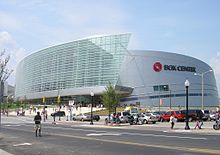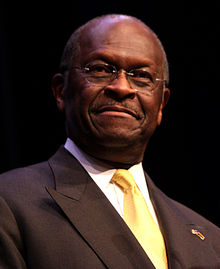
Incumbent Republican Donald Trump led an unsuccessful campaign for the 2020 United States presidential election. He was inaugurated for his first term on January 20, 2017, and officially announced his reelection campaign on June 18, 2019.
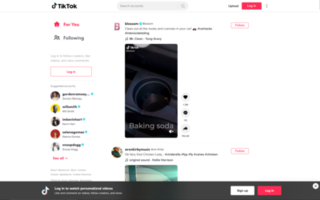
TikTok, deployed in China as Douyin, is a short-form video hosting service owned by the Chinese company ByteDance. It hosts user-submitted videos, which can range in duration from 15 seconds to 10 minutes.

Sarah Anne Cooper is an American author and comedian based in New York City. She worked in design for Yahoo! and in user experience for Google Docs, Sheets, and Slides while also performing stand-up comedy. Cooper left Google to focus full-time on writing and comedy. Her first two books, 100 Tricks to Appear Smart in Meetings and Draw What Success Looks Like were published in 2016. Her third book, How to Be Successful Without Hurting Men's Feelings, was published in 2018.

John Kevin Stitt is an American businessman and politician serving as the 28th governor of Oklahoma since 2019. A member of the Republican Party, he was first elected in 2018, defeating Democrat and former state Attorney General Drew Edmondson with 54.3% of the vote. Stitt was reelected to a second term in 2022, defeating Superintendent of Public Instruction Joy Hofmeister, a Republican turned Democrat, with 55.4% of the vote. As a member of the Cherokee Nation, Stitt is the second governor of Native descent after former Oklahoma governor Johnston Murray.
The following is a list of notable events, births and deaths from 2020 in the United States.

Regina Goodwin is an American politician who has served in the Oklahoma House of Representatives from the 73rd district since 2015.

The COVID-19 pandemic in the United States is a part of the worldwide pandemic of coronavirus disease 2019 (COVID-19) caused by severe acute respiratory syndrome coronavirus 2 (SARS-CoV-2). In the United States, it has resulted in 101,244,321 confirmed cases with 1,096,503 all-time deaths, the most of any country, and the twentieth-highest per capita worldwide. The COVID-19 pandemic ranks first on the list of disasters in the United States by death toll; it was the third-leading cause of death in the U.S. in 2020, behind heart disease and cancer. From 2019 to 2020, U.S. life expectancy dropped by 3 years for Hispanic and Latino Americans, 2.9 years for African Americans, and 1.2 years for white Americans. These effects persisted as U.S. deaths due to COVID-19 in 2021 exceeded those in 2020, and life expectancy continued to fall from 2020 to 2021.

The COVID-19 pandemic was confirmed to have reached the U.S. state of North Carolina on March 3, 2020.
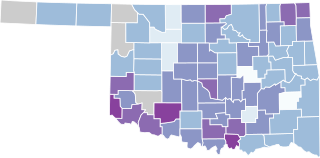
As of December 22, 2022, Oklahoma has been impacted more by Covid than the average U.S. state. Statistics for the U.S. as a whole are 331 deaths per 100,000 population with 68 percent of the population fully vaccinated. The comparable statistics for Oklahoma are 405 deaths per 100,000 population with 59 percent of the population fully vaccinated. 16,041 deaths from Covid have been recorded in Oklahoma. A wide variation in deaths from Covid exists between counties in Oklahoma. Greer County recorded a death rate of .00753. Payne County recorded a death rate of only .00231 (231 deaths per 100,000 residents.

The COVID-19 pandemic in South Dakota is an ongoing viral pandemic of coronavirus disease 2019 (COVID-19), a novel infectious disease caused by severe acute respiratory syndrome coronavirus 2 (SARS-CoV-2). The state of South Dakota reported its first four cases and one death from COVID-19 on March 10, 2020. On June 15, 2021, South Dakota public health authorities reported 25 new cases of COVID-19, bringing the state's cumulative total to 124,377 cases. The state's COVID-19 death toll is 2,026, with no new deaths reported over the previous 24 hours. The state ranks 9th in deaths per capita among U.S. states, and 3rd in cases per-capita, behind only North Dakota and Rhode Island.
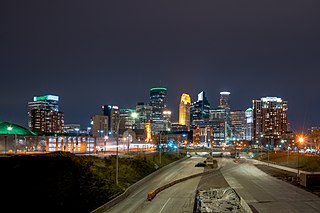
The COVID-19 pandemic in Minnesota is part of an ongoing pandemic of coronavirus disease 2019 (COVID-19) in the state of Minnesota. The first confirmed case was reported on March 6, 2020.
The following is a timeline of the COVID-19 pandemic in the United States during 2020.

The following is a timeline of the presidency of Donald Trump during the second quarter of 2020, from April 1 to June 30, 2020. To navigate quarters, see timeline of the Donald Trump presidency.
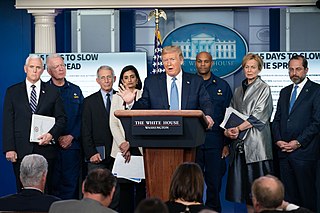
The Donald Trump administration communicated in various ways during the COVID-19 pandemic in the United States, including via social media, interviews, and press conferences with the White House Coronavirus Task Force. Opinion polling conducted in mid-April 2020 indicated that less than half of Americans trusted health information provided by Trump and that they were more inclined to trust local government officials, state government officials, the Centers for Disease Control and Prevention (CDC), and National Institute of Allergy and Infectious Diseases director Anthony Fauci.

The wearing of non-medical face masks in public to lessen the transmission of COVID-19 in the United States was first recommended by the CDC on April 3, 2020, as supplemental to hygiene and appropriate social distancing. Throughout the pandemic, various states, counties, and municipalities have issued health orders requiring the wearing of non-medical face coverings — such as cloth masks — in spaces and businesses accessible to the public, especially when physical distancing is not possible. Some areas only mandated their use by public-facing employees of businesses at first before extending them to the general public.

The following is a timeline of the presidency of Donald Trump during the third quarter of 2020, from July 1 to September 30, 2020. To navigate quarters, see timeline of the Donald Trump presidency.

The following is a timeline of the presidency of Donald Trump during the fourth and last quarter of 2020, from October 1 to December 31, 2020. This is also during the final month of his presidency from January 1 to 20, 2021, when Trump left office. To navigate quarters, see timeline of the Donald Trump presidency.

The White House COVID-19 outbreak was a cluster of SARS-CoV-2 infections that began in September 2020 and ended in January 2021 that spread among people, including many U.S. government officials, who were in close contact during the COVID-19 pandemic in Washington, D.C. Numerous high-profile individuals were infected, including President Donald Trump, who was hospitalized for three days. At least 48 White House staff members or associates, closely working with White House personnel, tested positive for the virus. The White House resisted efforts to engage in contact tracing, leaving it unclear how many people were infected in total and what the origins of the spread were.
The following is a timeline of major events leading up and during the 2020 United States presidential election, the 59th quadrennial United States presidential election, from January to October 2020. For previous events, see Timeline of the 2020 United States presidential election (2017–2019). For subsequent events, see Timeline of the 2020 United States presidential election

In 2020, the U.S. government announced that it was considering banning the Chinese social media platform TikTok upon a request from then-U.S. president Donald Trump, who viewed the app as a national security threat. The result was that TikTok owner ByteDance—which initially planned on selling a small portion of TikTok to an American company—agreed to divest TikTok to prevent a ban in the United States and in other countries where restrictions are also being considered due to privacy concerns, which themselves are mostly related to its ownership by a firm based in China.
